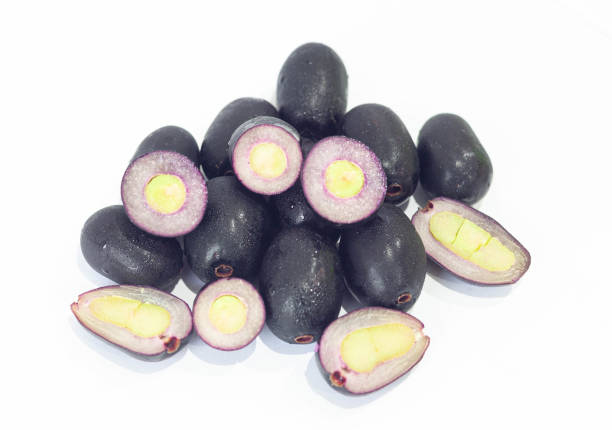Plums, those succulent, juicy fruits, signal the arrival of a delightful season cherished by fruit enthusiasts and culinary connoisseurs alike. As trees burst into bloom and orchards, come alive with vibrant hues of purples and reds, plum season emerges as a time of celebration and abundance. Let’s delve into the world of plum season, exploring its origins, varieties, nutritional benefits, culinary uses, and much more.
Introduction to Plum Season
Plum season marks the time when plums ripen and become readily available for harvest and consumption. It typically occurs during the late summer months, extending from late July through early September in many regions. This period offers a plethora of opportunities to indulge in the luscious flavors and nutritional benefits of plums.
The Origin of Plum Season
Plums have a rich history dating back thousands of years, with origins tracing to regions around the Caucasus Mountains in present-day Armenia. From there, plums spread across Asia, Europe, and eventually the rest of the world. Today, they are cultivated on almost every continent, with each region contributing its unique flavors and varieties to the plum season.
Varieties of Plums
Plums come in a diverse array of varieties, each boasting a distinctive flavor, texture, and color. Some popular varieties include Santa Rosa, Black Amber, Satsuma, Damson, and Mirabelle. These varieties vary in sweetness, tartness, and suitability for different culinary purposes.
Nutritional Benefits of Plums
Plums are not only delicious but also packed with essential nutrients. They are rich in vitamins A, C, and K, as well as dietary fiber and antioxidants. Consuming plums can promote digestive health, boost immunity, and contribute to overall well-being.
Culinary Uses of Plums
Plums are incredibly versatile in the kitchen, lending themselves to a wide range of culinary creations. They can be enjoyed fresh as a healthy snack, incorporated into salads, and used to make jams, preserves, sauces, and desserts such as pies, tarts, and cobblers. The sweet and tangy flavor of plums adds depth and complexity to both sweet and savory dishes.
Health Benefits of Consuming Plums
In addition to their delightful taste, plums offer numerous health benefits. They are known to support heart health, aid in weight management, regulate blood sugar levels and improve skin health. Regular consumption of plums can contribute to a balanced and nutritious diet.
Growing Plums: Tips and Tricks
Growing plums requires attention to specific cultivation techniques. Plums thrive in well-drained soil and direct adequate sunlight to flourish. Pruning, watering, and pest control are essential aspects of plum cultivation, ensuring healthy tree growth and abundant fruit production.
Harvesting and Storing Plums
Harvesting plums at the peak of ripeness is crucial to enjoy their full flavor and sweetness. Ripe plums should yield slightly to gentle pressure and have vibrant skin colors. Proper storage in a cool, dry place can prolong the shelf life of plums, allowing for extended enjoyment throughout the season.
Popular Plum Recipes
Plums inspire a myriad of delectable recipes, ranging from classic favorites to innovative creations. Some popular plum recipes include plum crisp, plum chutney, plum sorbet, plum-stuffed pork loin, and plum upside-down cake. These recipes showcase the versatility and culinary appeal of plums in various dishes.
Plum Festivals Around the World
Across different cultures and regions, plum festivals serve as vibrant celebrations of this beloved fruit. These festivals feature plum-themed events, including tastings, cooking demonstrations, orchard tours, and cultural performances. They provide an opportunity for communities to come together and appreciate the beauty and bounty of the plum season.
Plum Season in Different Climates
Plum season varies depending on the climate and geographical location. In temperate regions, the plum season typically aligns with the warm summer months, while in subtropical and Mediterranean climates, plums may ripen earlier in the year. Understanding local climate conditions is essential for successful plum cultivation and harvest.
Plum Symbolism and Cultural Significance
Plums hold symbolic significance in many cultures, representing abundance, prosperity, and good fortune. In Chinese culture, plums symbolize resilience and endurance, often depicted in art and literature as symbols of strength and vitality. Plum blossoms are revered for their beauty and fragrance, inspiring poetry and painting throughout history.
Plum Season and Environmental Impact
The cultivation and harvest of plums can have environmental implications, particularly concerning water usage, pesticide use, and habitat conservation. Sustainable farming practices aim to minimize environmental impact while maximizing crop yield and quality. Practices such as organic farming, water conservation, and habitat restoration contribute to the long-term sustainability of plum production.
Challenges Faced During Plum Season
Plum growers may encounter various challenges during the growing season, including weather fluctuations, pest infestations, disease outbreaks, and market competition. Adapting to these challenges requires resilience, innovation, and collaboration among growers, researchers, and policymakers to ensure the continued success of plum cultivation.
Conclusion: Embracing Plum Season
In conclusion, plum season heralds a time of abundance, flavor, and celebration. From its humble origins to its widespread culinary appeal, the plum captures the imagination and palate of people around the world. Whether enjoyed fresh, cooked, or preserved, plums offer a delightful symphony of taste and nutrition. Embracing plum season is not only a culinary delight but also a celebration of nature’s bounty and the joys of seasonal abundance.
